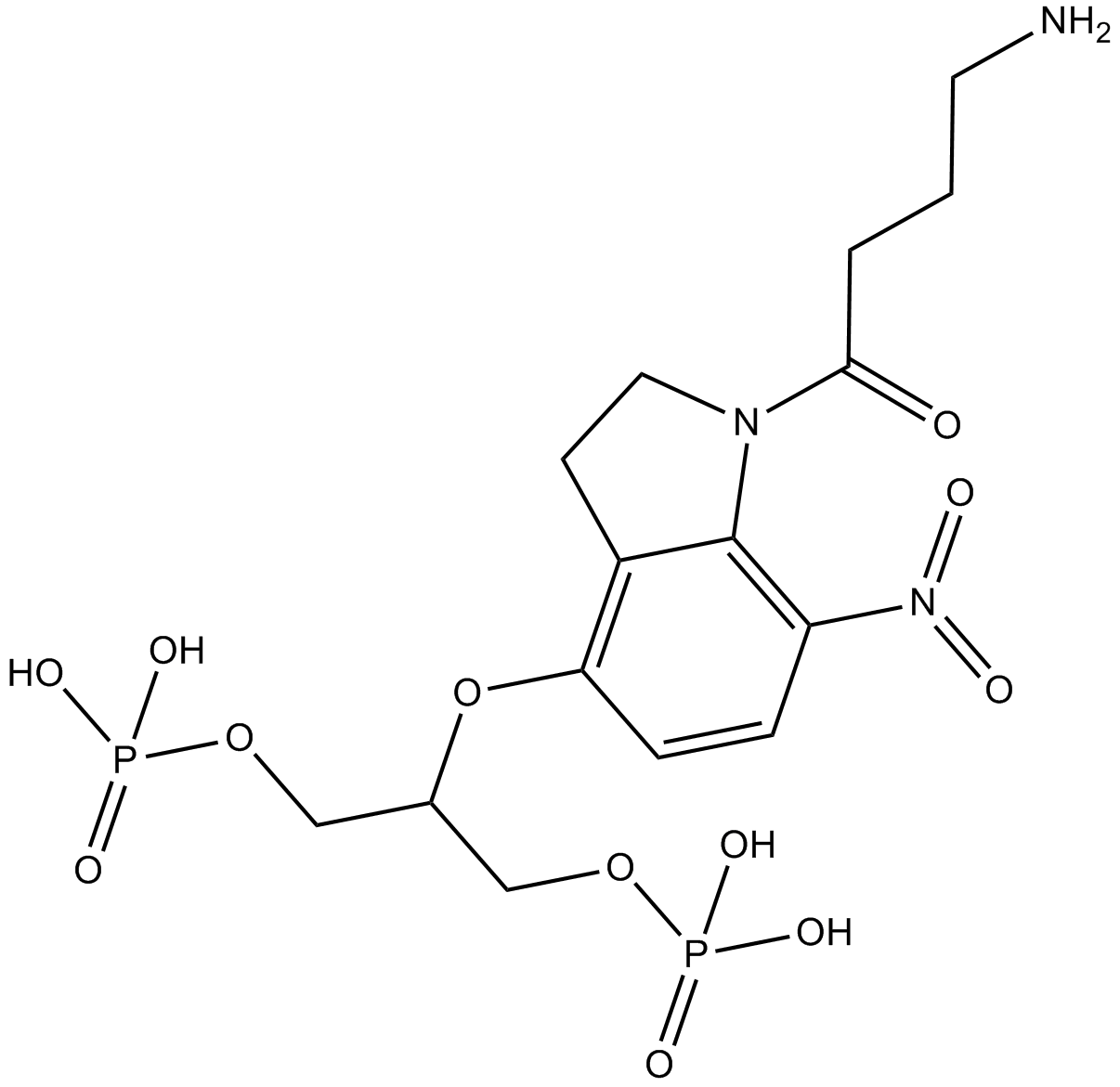DPNI-caged-GABA |
| Catalog No.GC14150 |
activates GABAA receptor
Products are for research use only. Not for human use. We do not sell to patients.

Cas No.: 927866-58-8
Sample solution is provided at 25 µL, 10mM.
IC50: N/A
DPNI-GABA, also known as Nitroindoline-caged GABA, has similar photochemical properties with MNI-glutamate, including the same quantum yield (0.085), highly water soluble, exhibitting fast photorelease that is efficient at near-UV and 405 nm wavelengths.
In vitro: Under the condition of retaining the advantages of nitroindoline cages, DPNI-GABA were modified to minimize the pharmacological interference commonly found with caged GABA reagents. Unlike previous test of the 5-methoxycarbonylmethyl-7-nitroindolinyl-GABA, DPNI-GABA reduced peak GABA-evoked responses with an IC50 of approximately 0.5mM, and blocked GABAA receptors with much lower affinity,. It is most important that the kinetics of receptor activation, comparable to synaptic events, were determined as 10–90% rise-times, and had no effect by DPNI-GABA present at 1 mM concentration, and permitted photolysis of DPNI-GABA to mimic synaptic activation of GABAA receptors. As estimated, the spatial resolution of uncaging DPNI-GABA in dendrites was 2m laterally and 7.5m focally with a laser spot of 1mapplied to cerebellar molecular layer interneurons. Finally, photorelease restricted to the area of the soma inhibited spiking in single Purkinje neurons or molecular layer interneurons for periods regulated by the flash intensity and duration at low DPNI-GABA concentration [1,2].
Under resting conditions, miniature synaptic currents have long been known to represent random transmitter release, but their nature and function in central synapses much remains to be learned about. A new class of miniature currents (‘‘preminis’’) arise by the autocrine activation of axonal receptors following random vesicular release. During the development of the molecular layer, preminis are prominent in gabaergic synapses made by cerebellar interneurons. Premini frequencies, unlike ordinary miniature postsynaptic currents in the same cells, are strongly enhanced by subthreshold depolarization, suggesting that themembrane depolarization they produce belongs to a feedback loop controlling neurotransmitter release. Thus, preminis enhanced neurotransmitter release to guide the formation of the interneuron network at recently formed synaptic contacts [3].
In vivo: So far, no study in vivo has been conducted
Clinical trial: So far, no clinical study has been conducted.
References:
[1]. Wieboldt R, Ramesh D, Carpenter BK, Hess GP. Synthesis and photochemistry of photolabile derivatives of gamma-aminobutyric acid for chemical kinetic investigations of the gamma-aminobutyric acid receptor in the millisecond time region. Biochemistry. 1994 Feb 15;33(6):1526-33.
[2]. Trigo FF, Papageorgiou G, Corrie JE, Ogden D. Laser photolysis of DPNI-GABA, a tool for investigating the properties and distribution of GABA receptors and for silencing neurons in situ. J Neurosci Methods. 2009 Jul 30;181(2):159-69. doi: 10.1016/j.jneumeth.2009.04.022. Epub 2009 May 5.
[3]. Trigo FF, Bouhours B, Rostaing P, Papageorgiou G, Corrie JE, Triller A, Ogden D, Marty A. Presynaptic miniature GABAergic currents in developing interneurons. Neuron. 2010 Apr 29;66(2):235-47.
Average Rating: 5 (Based on Reviews and 16 reference(s) in Google Scholar.)
GLPBIO products are for RESEARCH USE ONLY. Please make sure your review or question is research based.
Required fields are marked with *




















